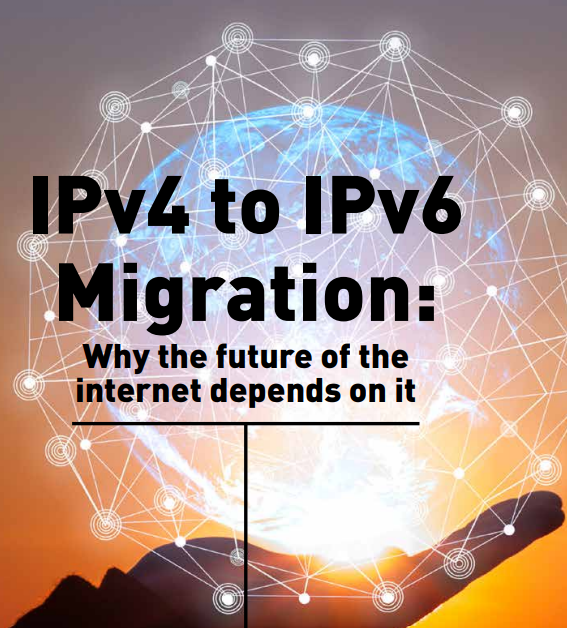IPv4 to IPv6 Migration: Why the future of the internet depends on it

Internet Protocol (IP) addresses are critical for connection to the Internet because they represent the numbers that uniquely identify devices connected to the Internet. Every device connected to the internet has a unique IP address.
However, a global shortage of IPv4 addresses has prompted all Internet technical standards bodies and network equipment vendors to endorse IPv6 and view it as the standards-based solution to the IPv4 address shortage.
The Communication Authority in Kenya (CA) published its IPv4 to IPv6 Migration Strategy last week.
From IPv4 to IPv6
IP addresses are globally managed by the Internet Corporation for Assigned Names and Numbers (ICANN). Five Regional Internet Registries (RIRs) around the world then allocate the addresses in sub-blocks to various country internet registries for consequent assignments to users. The initial set of IPv4 addresses were developed in the early 1980s and served the global Internet community for more than three decades.
IPv6 addresses were developed and standardised, as the next-generation Internet Protocol in 1996, with the intention of massively increasing the number of IP addresses available. It is expected to provide addresses for every device on the Internet individually and not expire for 200-300 years.
The African Network Coordination Centre (AFRINIC), the African RIR, has estimated the exhaustion of IPv4 addresses is projected in the year 2022, while noting that IPv6 adoption remains under 8% in Kenya as of August 2021.
IPv4 and IPv6 devices are not compatible and cannot communicate with each other. Thus support for both must be maintained in order to utilise them at the same time during the migration process. Moving too quickly or only supporting one or the other is almost guaranteed to lose some connectivity or communication until a full global conversion is completed.
Why an upgrade is necessary
To continue to ignore IPv6 could cause any number of potential problems including inability to migrate to IPv6 when there is no longer a choice, complete loss of connectivity with the Internet, and no longer being competitive with other organisations whose systems are primed for IPv6 and ready to move to the next generation of Internet addressing and use.
- IPv6 adoption is inevitable
IPv6 implementation is about future-proofing, especially with the near exhaustion of IPv4 addresses. Furthermore, IPv6 networks are characterised with the:
- More transparency within Networks: Direct node-to-node addressing with improved connectivity and more efficient processing, as well as easier management, troubleshooting, and tracing of nefarious activity.
- Improved mobility: No loss of connection when moving across different networks, less routing bandwidth overhead, and built-in route optimization support resulting in uninterrupted mobility.
- Enhanced security: End-to-end encryption (making it much more difficult for an attacker to observe or manipulate traffic between two hosts) and integrity-checking.
- Scalability and business continuity require IPv6.
With increased digitisation of businesses and processes, business continuity and scalability will require adoption of IPv6 networks. Due to the immense size, flexibility, and scalability of IPv6 networks, entrepreneurs can innovate and explore new business models, and move confidently into the future without the restrictions imposed by IPv4. IPv4’s role is going to decrease over time, and organisations relying on it as a sole method of connectivity will risk their business and their budget.
How Kenya seeks to promote migration to IPv6 addresses
To mitigate against the identified implications of non adoption or delayed adoption of IPv6, the CA has pledged to undertake the following activities:
- Regulatory intervention
- To spur the uptake of IPv6, only devices with IPv6 capability will be type approved for use in Kenya effective July 2023;
- Further assignments of resources, namely, numbering resource, frequency assignments and Top level Domain Name assignment documents will contain in them a regulatory requirement for adoption of IPv6 addresses;
- Inspection and Certification of Operator systems and networks will involve a check on the transition to IPv6 component and those found not to have adopted IPv6 would be deemed non-compliant; and
- Network Readiness Assessment report on what network components are IPv6-ready. An assessment report of less than 50 % readiness will be deemed non-compliant and licence renewed only after attainment of a minimum 50%, for the first year of 2022, after which the percentages will rise annually in 10% steps up to 100%.
- Communications and Stakeholder Management Plan – CA will develop an awareness campaign plan targeting the operators, vendors and the consumers on the need to acquire IPv6 ready or compliant devices.
- Trainings – CA will continually organise hands-on physical training, where trainees from the service providers will be taken through hands-on training on IPv6 migration and related technologies by CA sourced experts.
Success of the CA’s migration strategy will be determined on the following parameters:
- Increase the percentage of Telecommunication Licensees whose staff have undergone CA facilitated IPv6 trainings from [0% to 80%] of the licensees by December 2023; and
- Increase the percentage of IPv6 fully compliant Telecommunications Licensees from [0% to 50%] by July 2023.

